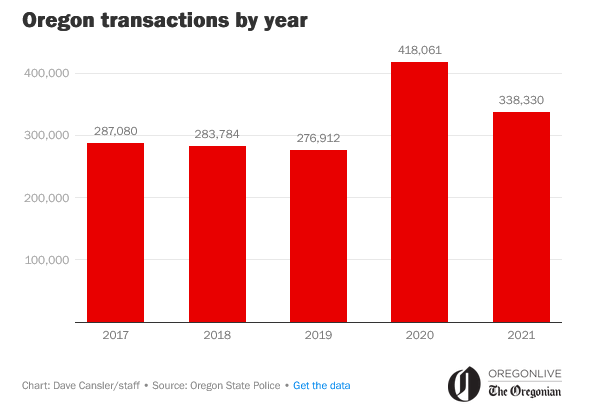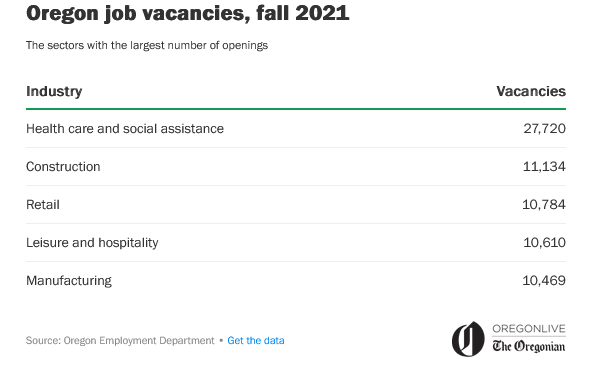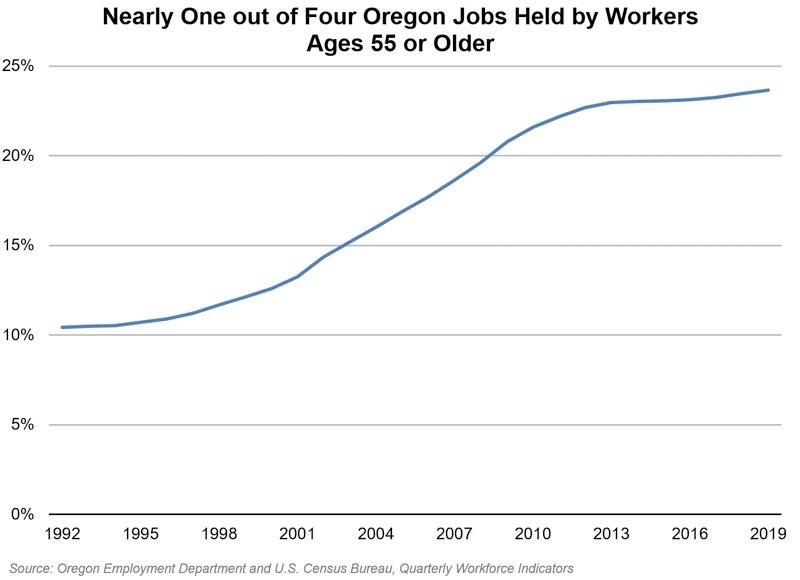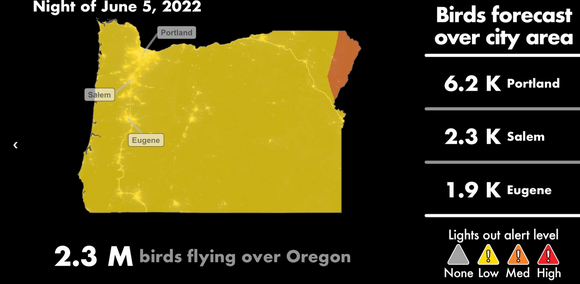By Representative David Gomberg, House District 10
In the aftermath of last week’s mass shootings, we are all heartsick and yearning for some kind of meaningful solution.
A white supremacist killed 10 Black people at a supermarket in a predominantly Black neighborhood in Buffalo, New York, on May 14. Ten days later, an elementary school in Uvalde, Texas, was attacked by an 18-year-old man armed with a rifle and 19 children and two teachers were killed. Another mass shooting at a hospital in Tulsa, Oklahoma, on Wednesday night left four dead.
With each headline I see about another mass shooting event I grow more frustrated with the inaction at the federal level. I am myself a gun owner. I respect and support our Second Amendment rights. Those rights should not include the right to own any type of weapon, nor to purchase one without a thorough background check. Bad people will still get guns. But we don’t need to make it easier. Common sense gun safety laws are essential to decrease the chance of firearms, especially those with military-level capabilities, getting in the hands of those who will do harm.
Here in Oregon we have passed measures to require background checks, to prevent people convicted of crimes or domestic violence from buying guns, and to allow the courts to remove firearms from people judged to be a danger to themselves or others. I have supported those measures. We have also increased funding for school counselors and community mental health and require monthly school safety drills.
I have not supported every firearm bill in Oregon and recently voted to oppose a measure that would hold owners liable for the actions of criminals that steal their guns or require secure storage even in homes with no children whenever owners step out the front door. I support and encourage responsible and safe gun ownership. But not every responsible action requires a statute.
About 40% of Oregon adults live in a household with a firearm, close to the national average. Politically, Oregon is more amenable to gun regulation than many other states. But we aren’t at the top of the list for tough gun laws nationally. The Giffords Law Center gives letter grades to the states and ranks Oregon at B-. It ranks Oregon 35th among the states for the rate of deaths from shootings, and 15th among the states for “gun safety strength.”
At the same time, firearms sales in Oregon continue to increase.
 |
Under Oregon law, the Oregon State Police conducts state and national criminal background checks for federally licensed gun dealers before a gun is sold or transferred. State law also requires a background check for all gun transfers, including those that take place at a gun show and between private parties.
I believe that background checks should be quick and convenient for law abiding citizens, and effectively screen out unqualified buyers.
Oregon State Police conducted 338,330 background checks on prospective gun buyers last year, a drop from 2020, when the state recorded the most, 418,061. But I’m frustrated that this process is not working well.
Under federal law, a gun dealer may sell a firearm to someone if a background check is not completed within three business days. But only 40% of the state police gun background checks were completed within those three days. About 14% took six months or longer, meaning the gun sales could proceed before a background check was done.
The Legislature during the regular session last year approved $2.6 million in one-time general fund spending to support 17 additional positions, including 12 part-time staff, to help address a backlog of gun background checks. Recruitment began in November to try to fill those jobs, and the first new hires started training in January, according to the state police report. The intention is to increase the number of checks completed quickly.
Interestingly, total gun sales in Lincoln County were higher than in Multnomah, Washington, or Clackamas despite their much higher populations. Click HERE for a link to county-by-county figures.
 |
Any discussion of firearms engenders a strong response in our diverse district. I respect that. As I said, I have not supported every proposal advanced in Salem. I do believe that laws passed should be effectively enforced. In many parts of Oregon, they are not.
Second Amendment Preservation Ordinances (SAPO) have been proposed in a dozen Oregon counties and passed in eight. When a SAPO is passed, the sheriff will determine whether any federal, state or local law infringes on the Second Amendment. Any law that interferes with Second Amendment rights is considered void, and local law enforcement cannot enforce these laws or spend county money enforcing them. SAPO proposals in Lincoln and Tillamook Counties were rejected by local voters.
There’s been a degree of compromise here. Oregon’s roots are in rural cultures and resource industries, and guns have a welcome home in much of the state. A provision in the state constitution says “The people shall have the right to bear arms for the defence [sic] of themselves, and the State.”
Concealed carry permits generally are allowed unless local law enforcement has a reason to think that person will constitute a danger to others. As of May 3 of this year, there were 310,630 concealed handgun licenses in the state. Our state doesn’t limit sales of military-type weapons like an AR-15, or the number of rounds in a magazine (other than for hunting), doesn’t require a delay between buying and taking possession of a gun, or require safety standards for the weapon or safety training. I did however, receive a safety orientation when I recently bought a chainsaw.
Two proposed ballot initiatives, numbered 17 and 18, may change this in November. Both have obtained enough petition signatures to obtain a ballot title, which is due for publication by June 24.
Number 17, called the Reduction of Gun Violence Act, would require buyers of guns to obtain a legal permit, and law enforcement would create a state database around those filings. It also would ban magazines that include more than 10 rounds.
Number 18, the Reduction of Harm from Weapons Act, would ban the manufacture of semi-automatics and require registration by people who already own them.
As a legislator I do not sign “pledges” about future votes for any organization. Doing so would limit my ability to negotiate or moderate the measures we consider. Because I decline to complete their questionnaire or such pledges, the NRA awards me an “F” grade on their annual ranking.
Guns have their place in our rural communities. Responsible owners need to be constructive advocates and engage in negotiations to create a workable fabric of rights and protections for Oregon. The safety and security of our schools, our workplaces, places of worship, and our communities demand no less.
Our local economy continues to be challenged by a shortage of employees. A summer worker shortage is typical at the coast. I certainly saw that when I was hiring for my own small business. But the situation now is not at all typical. Oregon has more than 100,000 job vacancies, with open jobs outnumbering the unemployed. Builders, factories, hotels, pubs and restaurants all struggle to meet customer demand for the simple reason they can’t find enough workers. Hospitals, nursing homes and clinics have struggled to find staff, too. That worker shortage is constraining economic growth, in our district and across Oregon.
 |
The worker shortage produced a big spike in wages. Entry level positions now pay well above the statutory minimum and vacant jobs are offering an average hourly wage of $21.22, up about 14% from a year earlier – even after adjusting for inflation.
Higher wages are, of course, great for workers. But as employers bid up what they’ll pay their new hires, and consumers bid up what they’ll pay for products in short supply, that feeds into the inflationary cycle.
Locally, I see three trends contributing to the worker shortage.
Immigration is down sharply. The number of working-age immigrants living in Oregon has fallen by nearly a third over the past five years, reversing decades of steady increases and contributing to the state’s labor shortage.
Oregon’s workers are growing older along with the general population. An October report by the Oregon Employment Department found the share of aging workers age 55 and older has tripled across the state over the past three decades — while the total number of jobs grew only about 50%. But many of these aging workers are retiring — retiring their skillsets and knowledge, as well — and business owners will need to replace them somehow.
 |
And thirdly, as I have observed before, the cost and availability of childcare is encouraging some families to keep one parent home and care for kids rather than pay most of their income to hire that service. The average annual cost of infant care in Oregon is more than the cost of college tuition, according to a report by the Economic Policy Institute.
That’s a big part of the reason why jobs are so readily available right now and why paychecks are rising as employers compete for workers. But with consumer demand still rising, and production constrained by the labor shortage and other factors, inflation is rising even faster than wages.
Here is a story that surprised me a bit.
During migration season, millions of birds fly though Oregon as they head north for the summer. Most of their journey happens after the sun goes down.
But light pollution can disorient birds. It also can draw them into urban areas where they can face hazards, like crashing into windows. The Audubon Society shared a “lights-out alert” on Tuesday. They referenced a forecast of bird migration patterns across the country and suggested varying levels of lights-out alerts based on how many birds are passing overhead.
On Tuesday alone, nearly 5 million birds were expected to migrate over Oregon skies. While numbers will wane throughout the week, the call to reduce lights at night in our larger cities continues through Friday when over 3 million birds are anticipated to pass over the state.
 |
I’m committed to earthquake readiness. So I was more than pleased to be invited to be part of the Preparedness Fair Sunday in Yachats. From there, Susie and I enjoyed the local farmer’s market and then dropped in on the Toledo Art Walk. We finished the day at the Sunday Jazz Jam in Gleneden Beach.
The week ahead is filled with a collection of meetings, tours, and presentations.
Earlier today, I was the radio guest on Tillamook Today. Tomorrow I will meet with representatives from SEIU and then lunch with the Pacific City Chamber of Commerce. Wednesday, I breakfast with Lincoln County Mayors and then zoom with Lincoln County civic and business leaders. In the afternoon, I’ll be part of the Oregon Innovation Council quarterly meeting. Thursday is the monthly meeting of the Oregon Commission on Senior Services.
Friday morning I’ll join the Lincoln Farm Bureau for the Farm, Fish, and Forests Tour before speaking to the Newport Chamber of Commerce. And Saturday I’ll meet with the Roads End Homeowners Association.
Hope to see you out there along the way!
email: Rep.DavidGomberg@oregonlegislature.gov
phone: 503-986-1410
address: 900 Court St NE, H-480, Salem, OR, 97301
website: http://www.oregonlegislature.gov/gomberg


.png)